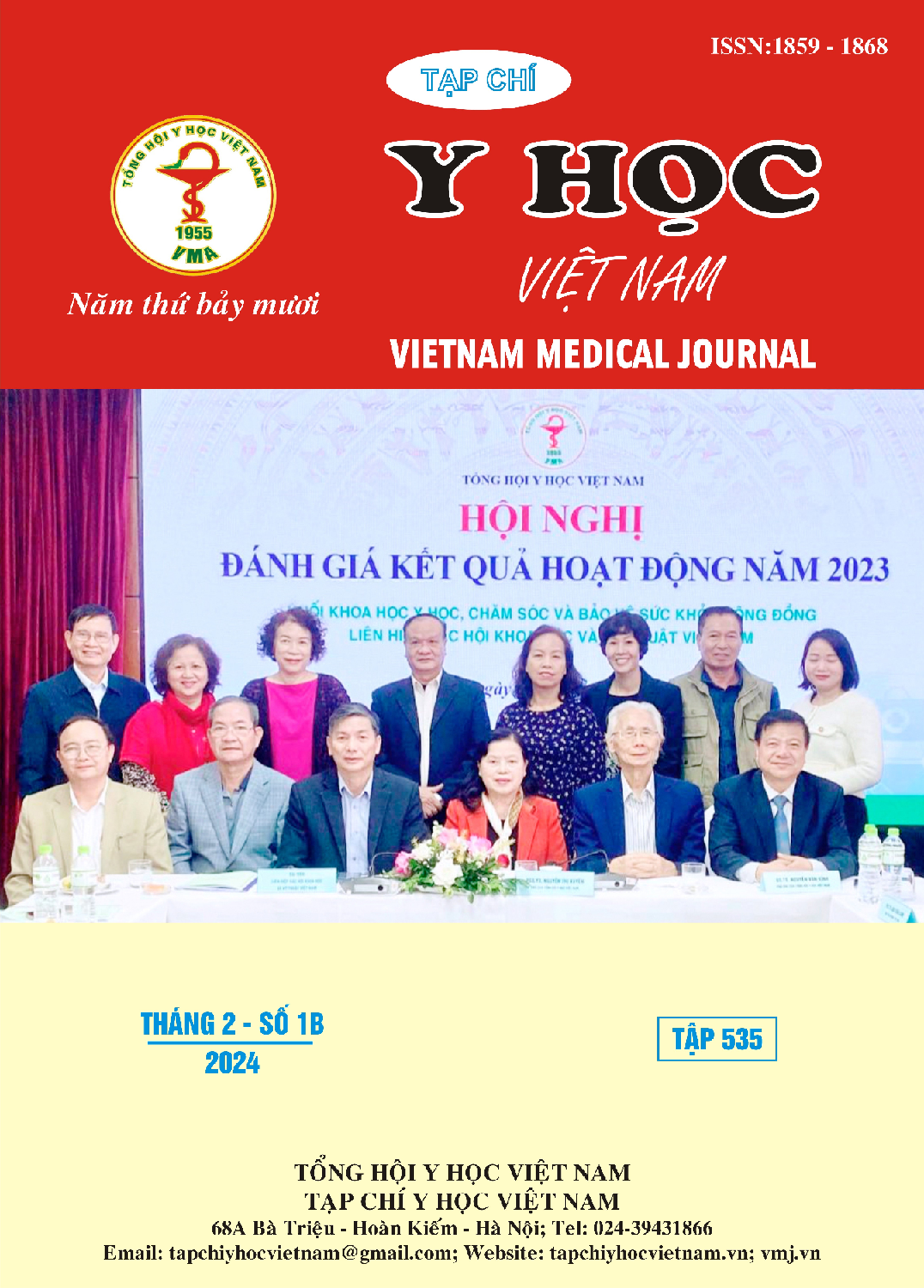CLINICAL AND SUB-CLINICAL CHARACTERISTICS AND RESULTS OF CONCENTRATED PNEUMONIA TREATMENT IN CHILDREN AT HAI DUONG CHILDREN'S HOSPITAL IN 2023
Main Article Content
Abstract
Objective: Describing the clinical and paraclinical characteristics and commenting on the results of pneumonia treatment that centralizing in children at the Respiratory Department of Hai Duong Children's Hospital in 2023. Method: Concurtent cohort study, cut across describe. Result: The study was conducted from April 1st, 2023 to September 30th, 2023 on 146 eligible patients. The average age of studied group was 34.8 ± 30.9 months, with more female than male. The most common symptoms were cough (93.1%) and fever (85.6%), chest pain 10.9%. Common physical symptoms were tachypnea (81.5%), pulmonary rales (47.9%), chest indrawing (31.5%), and consolidation syndrome with a low rate of 6.8%. On plain chest x-ray, 74.6% of children had atypical focused opacities, 25.4% of children had typical triangular opacities and mainly damaged in the right upper lobe of the lungs. The average number of white blood cells in the peripheral blood of the studied group was 15.2 ± 6.6 G/l. The average CRP concentration was 68.2 ± 38.9 mg/l, increased CRP accounted for 80.1% of cases. 61.6% of children was found the cause of the disease. Among them, the most common causes were Mycoplasma pneumonia (41.8%), Gram-positive bacteria (19.9%), and Gram-negative bacteria (5.5%). The succeedly cured result was 97.9%, with 2.1% of those asking to be discharged immediately after admission. The averaged hospital-stayed period were 9.6 ± 5.3 days. Conclusion: Concentrated pneumonia is a fairly common disease in children. It is difficult to diagnose concentrated pneumonia based only on clinical symptoms. A straight chest X-ray should be taken with all suspected cases to avoid omissions. The main causes are Mycoplasma Pneumonia, Haemophilus Influenzae, Streptococcus Pneumoniae
Article Details
Keywords
pneumonia, children.
References
2. Trần Quang Khải. Đặc điểm bệnh viêm phổi tập trung ở trẻ em từ 2 tháng – 15 tuổi tại khoa Nội tổng quát 2 bệnh viên nhi đồng 1. Luận văn Thạc sỹ y học, Trường Đại học Y Dược Hồ Chí Minh. 2016.
3. Lê Thị Hồng Hanh, Nguyễn Thị Ngọc Trân, Đặng Mai Liên, et al. Nghiên cứu đặc điểm lâm sàng, cận lâm sàng và tính nhạy cảm với kháng sinh của vi khuẩn trong viêm phổi thùy ở trẻ em. Tạp chí Y học Việt Nam. 2013;411(2):53-59.
4. Phạm Thu Hiền. Nghiên cứu đặc điểm dịch tễ, lâm sàng viêm phổi không điển hình do vi khuẩn ở trẻ em. Luận văn tiến sĩ y học Viện vệ sinh dịch tễ trung ương. 2014.
5. Đào Minh Tuấn. Nghiên cứa biểu hiện lâm sàng và căn nguyên viêm phổi thùy ở trẻ em. Tạp chí y học quân sự. 2011;5:34-38.
6. Đào Minh Tuấn. Nghiên cứu các căn nguyên gây viêm phổi và tính kháng kháng sinh của vi khuẩn gây viêm phổi ở trẻ em từ 1 tháng đến 15 tuổi tại khoa Hô hấp bệnh viện nhi Trung ương. Tạp chí y học Việt Nam. 2013;10(2):14 - 20.
7. Đinh Thị Yến. Lâm sàng, cận lâm sàng và kết quả điều trị 63 trường hợp viêm phổi thùy tại Bệnh viện trẻ em Hải Phòng. Tạp chí Nhi khoa. 2015;8(6):23 – 29.
8. Nguyễn Thị Vân Anh. Nghiên cứu đặc điểm lâm sàng và cận lâm sàng viêm phổi do Mycoplasma pneumoniae ở trẻ em trên 1 tuổi tại Bệnh viện Nhi Trung ương. Luận văn tốt nghiệp bác sĩ nội trú bệnh viện Trường đại học y Hà Nội. 2011
9. Liu L, Oza S, Hogan D, et al. Global, regional, and national causes of under-5 mortality in 2000-15: an updated systematic analysis with implications for the Sustainable Development Goals. Lancet. 2016;388(10063):3027-3035.
10. Coley B. Community-acquired Pneumonia and Bronchiolitis in Childhood Caffey’s Pediatric Diagnostic Imaging, 12th edition, Cincinnati Children's Hospital Medical Center. 2014;371-381.


